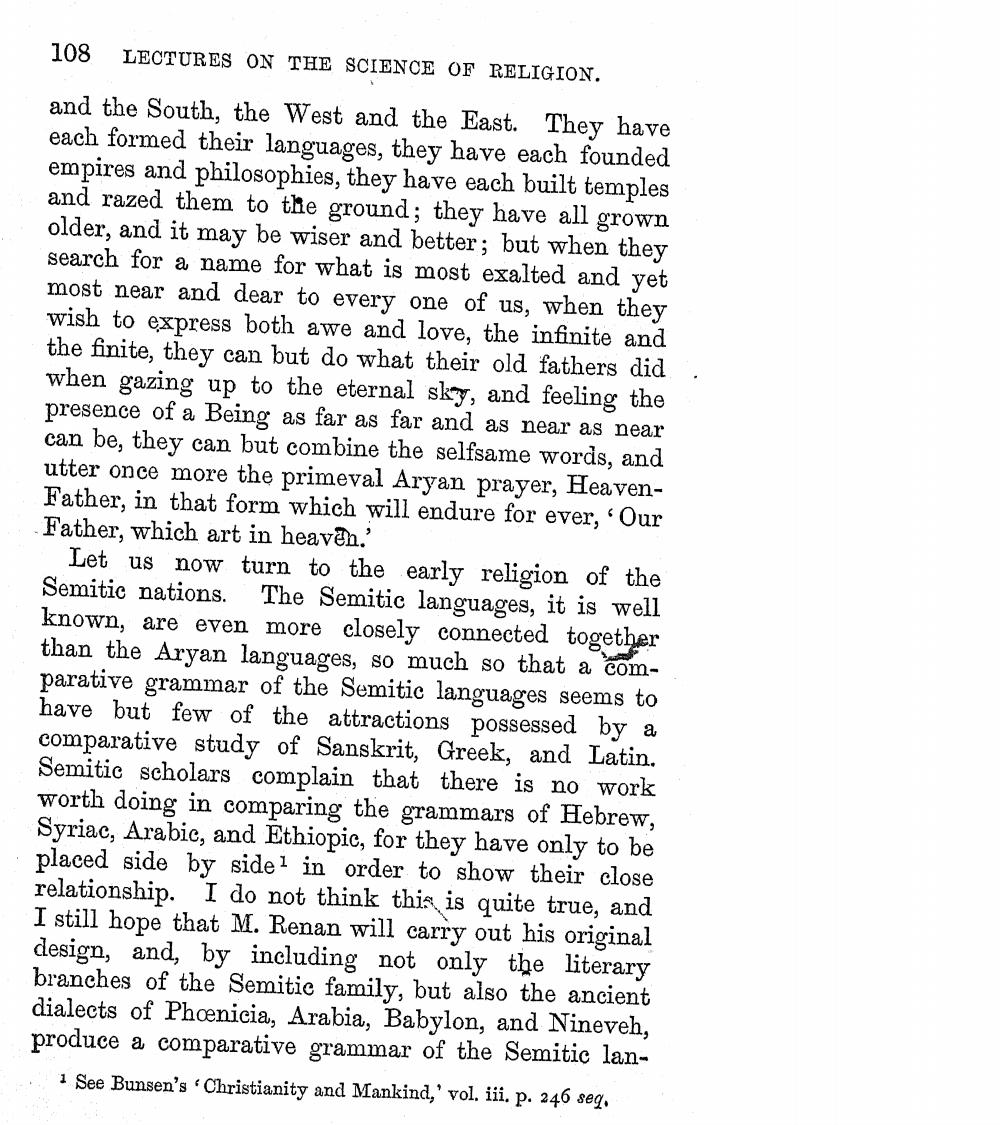________________
108
LECTURES ON THE SCIENCE OF RELIGION.
and the South, the West and the East. They have each formed their languages, they have each founded empires and philosophies, they have each built temples and razed them to the ground; they have all grown older, and it may be wiser and better; but when they search for a name for what is most exalted and yet most near and dear to every one of us, when they wish to express both awe and love, the infinite and the finite, they can but do what their old fathers did when gazing up to the eternal sky, and feeling the presence of a Being as far as far and as near as near can be, they can but combine the selfsame words, and utter once more the primeval Aryan prayer, HeavenFather, in that form which will endure for ever, 'Our Father, which art in heaven,
Let us now turn to the early religion of the Semitic nations. The Semitic languages, it is well known, are even more closely connected together than the Aryan languages, so much so that a comparative grammar of the Semitic languages seems to have but few of the attractions possessed by a comparative study of Sanskrit, Greek, and Latin. Semitic scholars complain that there is no work worth doing in comparing the grammars of Hebrew, Syriac, Arabic, and Ethiopic, for they have only to be placed side by side 1 in order to show their close relationship. I do not think this is quite true, and I still hope that M. Renan will carry out his original design, and, by including not only the literary branches of the Semitic family, but also the ancient dialects of Phoenicia, Arabia, Babylon, and Nineveh, produce a comparative grammar of the Semitic lan
1 See Bunsen's Christianity and Mankind,' vol. iii. p. 246 seg.




